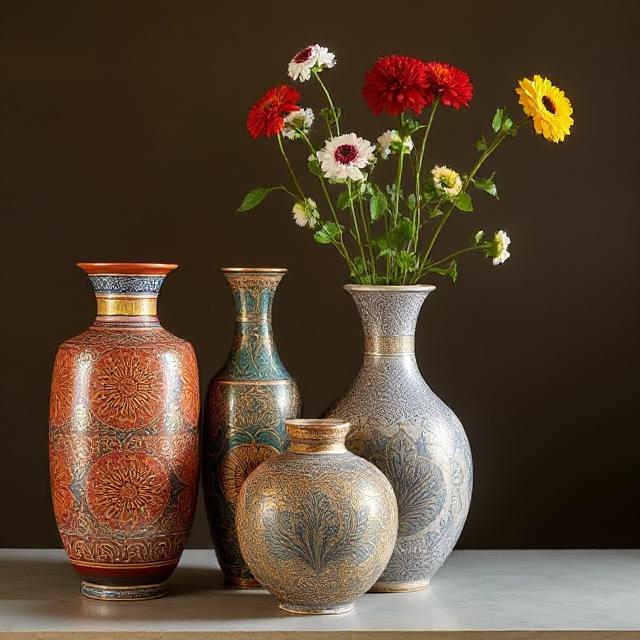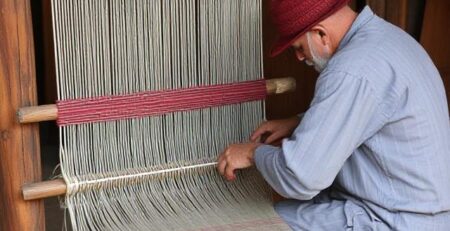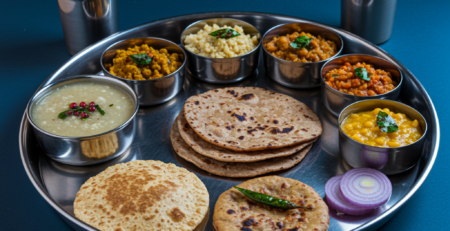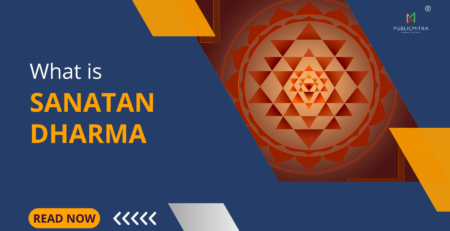Bidri Artwork Vases: The Ultimate Guide to Karnataka’s 600-Year-Old Metalcraft Legacy
Introduction: The Timeless Elegance of Bidri Artwork Vases
Bidri artwork vases represent one of India’s most sophisticated and enduring metalcraft traditions, originating from the historic city of Bidar in Karnataka. These exquisite pieces showcase the remarkable fusion of Persian artistry with Indian craftsmanship, creating decorative objects that have captivated art enthusiasts for over six centuries. The intricate silver inlay work against the distinctive black metal backdrop makes Bidri vases not just functional vessels, but true works of art that embody the rich cultural heritage of the Deccan region.
The art of Bidri, which gives its name to these magnificent vases, has survived the test of time, evolving from royal patronage during the Bahmani Sultanate to becoming a cherished handicraft that graces homes and collections worldwide. Today, authentic Bidri artwork vases continue to be handcrafted in Bidar, maintaining the traditional techniques passed down through generations of skilled artisans.
What Type of Art is Bidri: Understanding the Metalcraft Tradition
Bidri is a unique form of metalwork that falls under the category of damascening, a technique that involves the intricate inlay of precious metals into a base metal surface. This ancient art form combines metallurgy, chemistry, and artistic design to create objects of exceptional beauty and durability. The process begins with casting or shaping white brass (an alloy of copper and zinc) into the desired form, followed by the application of a special blackening solution that transforms the metal’s surface into a deep, velvety black finish.
The artistry of Bidri lies in its contrast – the stark black background serves as a canvas for delicate silver inlay work that forms intricate patterns, motifs, and designs. These patterns range from geometric configurations and floral motifs to calligraphic inscriptions and figurative representations. The silver inlay is not merely decorative; it is integral to the piece’s structure, creating a permanent bond with the base metal that ensures longevity and resistance to tarnishing.
Bidri artwork encompasses various forms including vases, bowls, boxes, jewelry, decorative panels, and architectural elements. Among these, vases hold a special place as they combine functionality with artistic expression, making them ideal for both practical use and aesthetic appreciation. The three-dimensional nature of vases allows artisans to showcase their skills across curved surfaces, creating dynamic visual effects as light plays across the inlaid patterns.
Which City is Famous for Bidri Art: Bidar’s Cultural Legacy
Bidar, a historic city in Karnataka, India, holds the distinguished honor of being the birthplace and continued center of Bidri artwork production. Located in the northern part of Karnataka, approximately 145 kilometers from Hyderabad, Bidar has been synonymous with this metalcraft for over 600 years. The city’s association with Bidri art is so profound that the craft derives its very name from the city – “Bidri” literally means “of Bidar.”
The choice of Bidar as the center for this art form was not coincidental. The city’s strategic location on the Deccan Plateau provided access to the necessary raw materials, while its position as a major trade route facilitated the exchange of artistic ideas and techniques. The local soil of Bidar contains unique minerals that are essential for the blackening process, making it impossible to replicate the authentic Bidri finish elsewhere. This geographical specificity has been recognized through the Geographical Indication (GI) registry, which was granted to Bidriware on January 3, 2006, ensuring that only products made in Bidar can carry the authentic Bidri designation.
Today, Bidar continues to be home to numerous families of traditional artisans who have inherited the skills and knowledge of Bidri craft through generations. The city’s narrow lanes house small workshops where the rhythmic sounds of hammering and chiseling continue to echo, as craftsmen meticulously create each piece by hand. Government initiatives and cultural organizations have worked to preserve and promote this heritage, ensuring that Bidar remains the undisputed capital of Bidri artwork.
How Many Years Old is Bidri Art: A Journey Through Six Centuries
The illustrious history of Bidri art spans approximately 600 years, with its origins tracing back to the 14th century during the reign of the Bahmani Sultans. The art form is specifically attributed to the patronage of Ahmed Shah Al Wali Bahmani (1422-1436), the ninth sultan of the Bahmani dynasty, who established Bidar as his capital and actively promoted the arts and crafts.
Historical records suggest that the techniques and aesthetic principles of Bidri were influenced by Persian metalwork traditions, brought to India by craftsmen who accompanied the Islamic rulers. These Persian artisans, settling in Bidar, adapted their traditional techniques to local materials and conditions, gradually developing the distinctive style that characterizes Bidri artwork today. The fusion of Persian artistic sensibilities with Indian craftsmanship created a unique art form that was neither purely Persian nor entirely Indian, but something entirely new and distinctive.
During the 15th and 16th centuries, Bidri art flourished under the continued patronage of successive rulers, including the Adil Shahi dynasty of Bijapur and later the Nizams of Hyderabad. Each period brought its own stylistic influences and innovations, contributing to the rich repertoire of designs and techniques that define Bidri artwork. The Mughal period saw the introduction of new motifs and patterns, while the colonial era brought challenges and opportunities as the art form adapted to changing tastes and markets.
The 19th and 20th centuries marked a critical period for Bidri art, as traditional patronage systems declined and artisans faced economic pressures. However, the inherent beauty and craftsmanship of Bidri artwork ensured its survival, with collectors and connoisseurs continuing to value these pieces. The independence of India brought renewed interest in traditional crafts, and government initiatives in the latter half of the 20th century helped revive and sustain the art form.
Traditional Bidri Artwork Vase Designs: Patterns and Motifs
The design vocabulary of Bidri artwork vases is remarkably rich and diverse, reflecting the cultural synthesis that characterizes this art form. Traditional designs can be broadly categorized into several thematic groups, each with its own aesthetic principles and symbolic meanings.
Floral and Botanical Motifs form the largest category of Bidri designs, featuring intricate representations of flowers, leaves, vines, and trees. The rose, lotus, jasmine, and marigold are particularly popular, often stylized in flowing, naturalistic patterns that cover the entire surface of the vase. These botanical designs are not merely decorative but carry cultural and spiritual significance, with the lotus representing purity and the rose symbolizing divine love. The artistry lies in the seamless integration of these motifs, creating continuous patterns that flow around the curved surfaces of the vases.
Geometric Patterns represent another significant category, showcasing the mathematical precision and artistic skill of Bidri craftsmen. These designs include intricate star-and-polygon patterns, interlacing bands, and complex geometric networks that create mesmerizing visual effects. The precision required to execute these patterns on the curved surfaces of vases demonstrates the exceptional skill of the artisans and their deep understanding of geometric principles.
Calligraphic Designs reflect the Islamic influence on Bidri art, featuring Arabic and Persian inscriptions in various scripts. These may include verses from the Quran, poetry, or decorative calligraphy that serves both aesthetic and spiritual purposes. The flowing lines of the script are often integrated with floral motifs, creating harmonious compositions that blend text and decoration.
Figurative Representations occasionally appear in Bidri vases, depicting birds, animals, and human figures in stylized forms. These designs require exceptional skill and are often found in higher-grade pieces created for discerning collectors. The figures are typically rendered in a flat, decorative style that emphasizes pattern and rhythm over realistic representation.
Architectural Elements sometimes appear in Bidri vase designs, featuring miniature representations of arches, domes, and other structural elements that reflect the architectural heritage of the Deccan region. These designs create a sense of depth and dimensionality, transforming the vase surface into a miniature architectural landscape.
Contemporary Bidri Vase Designs: Modern Interpretations
While traditional designs remain central to Bidri artwork, contemporary artisans have begun exploring new possibilities within the established framework of the craft. Modern Bidri vase designs often incorporate innovative interpretations of classical motifs, adapting traditional patterns to contemporary aesthetic sensibilities while maintaining the technical integrity of the craft.
Minimalist Approaches have gained popularity, featuring clean lines, simplified motifs, and generous use of negative space. These designs appeal to modern tastes while showcasing the inherent beauty of the contrast between the black metal and silver inlay. Simple geometric patterns, single floral motifs, or elegant calligraphic elements are used sparingly to create sophisticated, understated pieces.
Fusion Designs combine traditional Bidri motifs with elements from other artistic traditions, creating unique pieces that appeal to global audiences. These might include combinations of Indian floral patterns with contemporary geometric designs, or the integration of modern typography with traditional calligraphy.
Thematic Collections have emerged as artisans create series of vases around specific themes such as seasons, festivals, or cultural celebrations. These collections allow for creative exploration while maintaining coherence across multiple pieces.
Size and Form Innovations have led to the creation of vases in new proportions and shapes, from miniature decorative pieces to large statement objects. While maintaining the essential characteristics of Bidri craft, these innovations expand the possibilities for interior decoration and artistic expression.
Bidri Artwork Vase Price Guide: Understanding Market Values
The price of Bidri artwork vases varies significantly based on several factors including size, complexity of design, quality of craftsmanship, age, and provenance. Understanding these factors is essential for both collectors and buyers seeking to acquire authentic pieces.
Entry-Level Pieces typically range from $50 to $200, featuring simple designs and smaller sizes. These vases, while authentic, may have less intricate inlay work and simpler motifs. They are ideal for those beginning to collect Bidri artwork or seeking affordable decorative pieces.
Mid-Range Vases fall within the $200 to $800 price bracket, offering more sophisticated designs and better craftsmanship. These pieces often feature more complex patterns, finer inlay work, and larger sizes. The attention to detail and artistic execution is notably higher in this category.
Premium Pieces command prices from $800 to $3,000 or more, representing the finest examples of contemporary Bidri craftsmanship. These vases feature exceptional artistic merit, complex designs, and superior execution. They are often created by master artisans and may include innovative design elements or particularly challenging technical achievements.
Antique and Vintage Pieces can command significantly higher prices, especially if they can be authenticated as historical examples. 19th and early 20th-century pieces are particularly sought after, with prices ranging from $1,500 to $10,000 or more for exceptional examples. The provenance, condition, and historical significance all influence the value of these pieces.
Factors Affecting Price include the intricacy of the silver inlay work, the quality of the blackening finish, the overall condition of the piece, the reputation of the artisan (if known), and the rarity of the design. Pieces with damaged inlay work or poor-quality blackening will command lower prices, while pristine examples with exceptional craftsmanship will be valued accordingly.
Special Collections and Limited Editions
Many contemporary Bidri artisans and workshops have begun creating special collections and limited editions that command premium prices and attract serious collectors. These pieces often represent the pinnacle of the artisan’s skill and creativity, incorporating innovative designs or commemorating significant events.
Master Artisan Collections feature works by renowned craftsmen who have achieved recognition for their exceptional skills. These pieces are often numbered and come with certificates of authenticity, providing buyers with assurance of quality and provenance. The limited nature of these collections adds to their value and collectibility.
Commemorative Pieces are created to mark special occasions, festivals, or cultural events. These might include vases designed for specific celebrations, featuring unique motifs or inscriptions that relate to the occasion. The limited production runs and special significance of these pieces often result in higher prices and increased collector interest.
Experimental Designs represent the cutting edge of contemporary Bidri art, featuring innovative approaches to traditional techniques. These pieces might incorporate new materials, unconventional forms, or novel design concepts while maintaining the essential characteristics of Bidri craft.
Collaborative Works sometimes emerge from partnerships between traditional artisans and contemporary designers, creating unique pieces that bridge traditional craft with modern aesthetics. These collaborations often result in limited-edition pieces that attract both craft enthusiasts and design collectors.
Specials and Seasonal Offerings
The Bidri artwork market experiences seasonal variations in both availability and pricing, with certain times of the year offering special opportunities for collectors and buyers.
Festival Seasons such as Diwali, Eid, and Christmas see increased production of specially designed vases featuring motifs and patterns appropriate to the celebrations. These seasonal pieces often incorporate traditional symbols and colors associated with the festivals, creating unique collectible items.
Export Specials are occasionally offered by artisan cooperatives and export houses, featuring curated collections at attractive prices. These offerings are typically available for limited periods and may include pieces that showcase the full range of Bidri artistic techniques.
Workshop Clearances sometimes provide opportunities to acquire quality pieces at reduced prices, particularly when artisans are transitioning between collections or clearing inventory. These sales require careful evaluation to ensure authenticity and quality.
Tourist Season Specials in Bidar and other craft centers often feature demonstrations, workshops, and special pricing for visitors. These events provide opportunities to observe the creation process and purchase directly from artisans.
Authentication and Quality Assessment
Given the popularity and value of Bidri artwork vases, the market has seen the emergence of imitations and lower-quality pieces that may be misrepresented as authentic Bidri. Understanding how to authenticate and assess quality is crucial for buyers and collectors.
Geographical Indication Certification provides the primary authentication for genuine Bidri artwork. Products bearing the GI tag have been verified as authentic pieces created in Bidar using traditional techniques and materials. This certification is particularly important for high-value purchases.
Technical Examination involves assessing the quality of the blackening finish, the precision of the inlay work, and the overall craftsmanship. Authentic Bidri pieces exhibit a deep, even black finish that does not flake or wear easily. The silver inlay should be flush with the surface and show no signs of lifting or separation.
Design Authenticity can be evaluated by examining the motifs and patterns used. Traditional Bidri designs follow established conventions and proportions, while contemporary pieces should show clear artistic merit and technical competence. Mass-produced imitations often feature simplified or inaccurate patterns.
Provenance Documentation becomes increasingly important for high-value and antique pieces. Reputable dealers and auction houses provide detailed information about the piece’s history, previous ownership, and any relevant documentation.
Care and Maintenance of Bidri Artwork Vases
Proper care and maintenance are essential for preserving the beauty and value of Bidri artwork vases. The unique materials and techniques used in their creation require specific approaches to cleaning, storage, and display.
Regular Cleaning should be performed using soft, dry cloths to remove dust and surface dirt. Avoid using water or chemical cleaners, as these can damage the blackening finish and affect the silver inlay. For stubborn dirt, a slightly damp cloth can be used sparingly, followed immediately by thorough drying.
Storage Considerations include protecting pieces from humidity, temperature fluctuations, and direct sunlight. Bidri artwork should be stored in stable environmental conditions, preferably in display cases or cabinets that provide protection while allowing viewing.
Handling Precautions involve supporting the weight of vases properly and avoiding contact with the decorated surfaces. The silver inlay, while durable, can be damaged by rough handling or impact. When moving pieces, use both hands and ensure secure grip on undecorated areas.
Professional Conservation may be necessary for antique or damaged pieces. Qualified conservators familiar with metalwork can address issues such as loose inlay, damaged blackening, or structural problems. Attempting repairs without proper expertise can significantly damage the piece and reduce its value.
The Future of Bidri Artwork Vases
The future of Bidri artwork vases looks promising, with several factors contributing to sustained interest and development in this traditional craft. Government initiatives, cultural organizations, and market forces are all working to ensure the continued vitality of this 600-year-old art form.
Government Support includes programs to train new artisans, provide marketing assistance, and preserve traditional techniques. The recognition of Bidri as a Geographical Indication has helped protect the authenticity of the craft and support local artisans.
Educational Initiatives are working to document traditional techniques and train new generations of craftsmen. Art schools and cultural institutions are incorporating Bidri techniques into their curricula, ensuring the transmission of knowledge to future artisans.
Market Expansion through online platforms and international exhibitions is creating new opportunities for Bidri artisans to reach global audiences. E-commerce platforms have made authentic Bidri artwork more accessible to collectors and enthusiasts worldwide.
Innovation Within Tradition continues as contemporary artisans explore new possibilities while respecting the essential characteristics of the craft. This balance between innovation and tradition ensures the continued relevance and appeal of Bidri artwork in contemporary contexts.
Cultural Tourism to Bidar and other craft centers provides economic support for artisans and helps raise awareness of the craft. Visitors to these centers can observe the creation process, purchase directly from artisans, and contribute to the preservation of this traditional art form.
Conclusion: The Enduring Appeal of Bidri Artwork Vases
Bidri artwork vases represent one of the finest achievements in Indian metalcraft, combining technical excellence with artistic vision to create objects of enduring beauty and cultural significance. The 600-year history of this craft, rooted in the historic city of Bidar, Karnataka, demonstrates the remarkable continuity of artistic tradition and the dedication of generations of skilled artisans.
The unique characteristics of Bidri art – the deep black finish, the intricate silver inlay work, and the sophisticated design vocabulary – continue to captivate collectors and art enthusiasts worldwide. Whether seeking a traditional piece that embodies centuries of artistic heritage or a contemporary interpretation that brings ancient techniques into dialogue with modern aesthetics, Bidri artwork vases offer something for every taste and budget.
The price range for these pieces, from accessible entry-level vases to premium collector’s items, ensures that this art form remains available to a broad audience while maintaining the quality and craftsmanship that have made it famous. Special collections and limited editions provide opportunities for serious collectors to acquire exceptional pieces, while the ongoing work of contemporary artisans ensures the continued evolution and vitality of the craft.
As we look to the future, the combination of traditional techniques with contemporary innovation, supported by government initiatives and growing international recognition, suggests that Bidri artwork vases will continue to enchant and inspire for generations to come. These remarkable pieces stand as testaments to the enduring power of human creativity and the importance of preserving our cultural heritage for future generations.
For those considering acquiring a Bidri artwork vase, whether as a decorative object, a collector’s item, or an investment in cultural heritage, the rich history, exceptional craftsmanship, and timeless beauty of these pieces make them worthy additions to any collection. The art form’s recognition through Geographical Indication certification provides assurance of authenticity, while the ongoing work of dedicated artisans ensures that each piece carries forward the remarkable legacy of this 600-year-old tradition.












